Rose Guide to the Temple
Copyright 2012 Bristol Works, Inc.
All rights reserved.
Rose Publishing, Inc.
4733 Torrance Blvd., #259
Torrance, California 90503 USA
www.rose-publishing.com
Conditions of Use
The pages may not be modified in any manner. Permission is not granted to modify pages, to reprint charts, maps, and time lines apart from the page setting, to reprint groups of pages in bound form, either electronically or physically, or to offer copies for sale or donation either at cost or profit. All commercial use of this material is reserved by Rose Publishing, Inc. These charts, maps, illustrations, and time lines may not be placed nor used on websites. Any other use must be approved in writing by Rose Publishing, Inc.
Photographs, Illustrations and Other Credits
Author: Randall Price, ThM, PhD
Contributors: Aubrey Buster, MA; Shawn Vander Lugt, MA; Benjamin Galan, MTS, ThM, Adjunct Professor of OT Hebrew and Literature at Fuller Seminary
Illustrators: Cara Nilsen, caranilsen.blogspot.com; Stan Stein; Hugh Claycombe; Leen Ritmeyer, www.ritmeyer.com; Bill Latta; Balage Balogh, Archaeology Illustrated.com; Messiah in the Temple Foundation www.themessiahinthetemple.com, Foundation Der Messias im Tempel Basel, Switzerland; Alexander Schick/Uwe Beer www.bibelausstellung.de
Photo credits: Kim E. Walton, Walton Image Supply; Todd Bolen, BiblePlaces.com
Editor: Jessica Curiel, MA
Designer: Cristalle Kishi
Special thanks to Leen Ritmeyer for his comments and help with this project.
Unless otherwise specified, all Scripture was taken from THE HOLY BIBLE: NEW INTERNATIONAL VERSION NIV. 1973, 1978, 1984, 2011 by Biblica, Inc.. Used by permission of Zondervan. All rights reserved worldwide.

INTRODUCTION
The temple built in Jerusalem is the most important building in history. Perhaps greater and grander structures have been built, but what makes the temple the most important is that God designed this structure as the place where his glorious presence would dwell. Though many times in history religions and political leaders have sought to deny, destroy, or replace the significance of the temple with shrines or symbols of their own, the temple and its site of the Temple Mount have continued even to this day to be before the eyes of the world.
- Christianity remembers the temple in association with the teachings of Jesus and the last week of his life on earth.
- Islamic tradition claims that a stone at the Temple Mount is the place where Abraham brought his son Ishmael and from which the prophet Muhammad ascended to heaven.
- Judaism, at least its Orthodox sect, still believes the divine presence attends the site. Most Orthodox Jews believe that the temple must one day be rebuilt.
These different perspectives on the temple have produced both controversy and conflict throughout history, and therefore those who would seek to understand the cause of this conflict must understand the subject of the temple itself.
Modern Jews and Christians often have difficulty understanding the concept of the temple and its sacrificial system. Although the temple was a familiar and accepted institution in early Judaism and the early church, its absence for the past 2,000 years has contributed to a lack of understanding regarding the temples nature and importance. However, both Jews and Christians still utilize buildings in their worship of God and believe that his presence is in some way with them as they meet. If houses of worship are important for believers today, how much more necessary was the existence of a physical sanctuary when the divine presence visibly manifested itself with his people! Though the physical temple does not stand today, the spiritual sense of the sanctuary that we experience now should help us appreciate what God provided in the past.
It is therefore only fitting that this book presents the temple visually. God originally gave the temple to the people of Israel as a visual aid to comprehending Gods glory in the heavenly temple and to show the way in which God in his holiness relates to people in their sinful condition. He provided its pattern by divine revelation and commanded that it be built according to his precise specifications. Every element in the design of the temple, like every garment and action of the priesthood, was intended for illustrating the divine ideal. From the beginning of creation, God communicated this divine ideal to humankind: He desires a relationship with his creatures, but on his terms, respecting his righteous standards. Throughout the history of divine revelation, God has continued to express this divine ideal through the concept of a sanctuary, whether actual or symbolic. For this reason, we find the concept of sanctuary spanning the whole of written revelationfrom the first book of the Old Testament to the last book of the New Testament. The more you are able to visualize this wonderful design, the greater you will enjoy this central teaching of the Word of God.
Although the Temple Mount today is the most volatile acreage on earth, for those who seek a relationship with the God of the universe, the study of the temple is one of the most vital activities for faith and worship. If you approach this study as one would approach the gates of the ancient temple with wonder and awe and then pass through with reverence, you will have the experience of the Israelites of old in gaining access to the knowledge of the Holy.
One thing I ask from the LORD , this only do I seek: that I may dwell in the house of the LORD all the days of my life, to gaze on the beauty of the LORD and to seek him in his temple. Psalm 27:4


SECTION 1

Gods Sanctuary Before the Temple
OVERVIEW OF THE TEMPLE IN GODS PLAN
Creation and the Fall
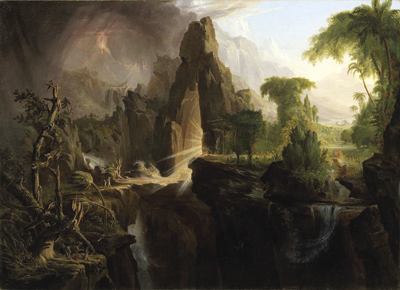
Expulsion from the garden of Eden after the Fall
The Bible reveals that God created humans in his image and that he desired from the beginning of creation to have a relationship with them (Genesis 1:26; 3:8). But when sin entered the world through the tragic event known as the Fall in the garden of Eden, humankind became alienated from God and forced God to exile them from his presence (Genesis 3:819, 23). To prevent them in this fallen state from reentering the garden, which represented a sanctuary where Gods holiness had dwelt, God stationed cherubim to guard the entrance (Genesis 3:24).
Sacrifices and Atonement
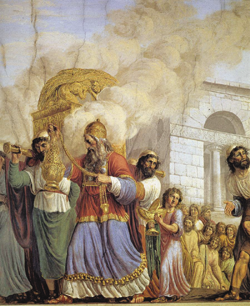
David bringing the ark of the covenant to Jerusalem
Yet God also revealed a way in which human sin could be forgiven and the broken relationship restored. God himself provided a substitute (an animal) whose blood (life) would atone for sin (Genesis 3:21). This began the sacrificial system. God also revealed the way in which he would return his presence to humanity and restore the earthly relationship once enjoyed in Eden; this was through the building of a sanctuary and maintaining a priesthood to serve God (Exodus 25:8; 27:21). First a tent-like structure called the tabernacle served as the sanctuary; it was later replaced by a permanent structure, the temple in Jerusalem. The sacrificial system was conducted within the tabernacle in the wilderness and later in the temple in Jerusalem (Deuteronomy 12:514).
Next page
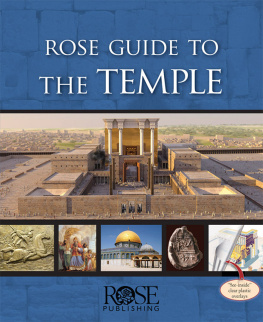

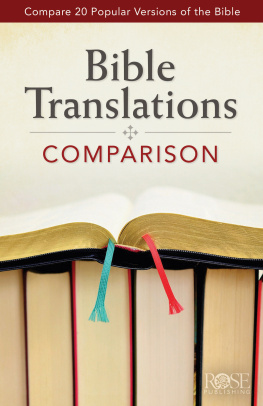
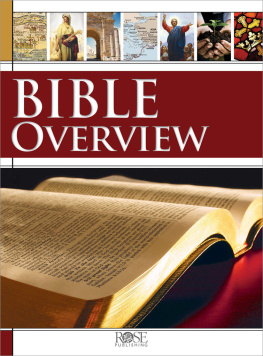
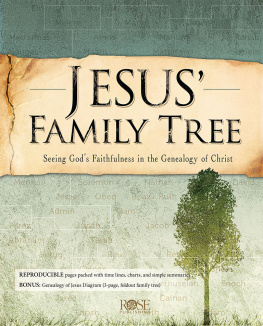
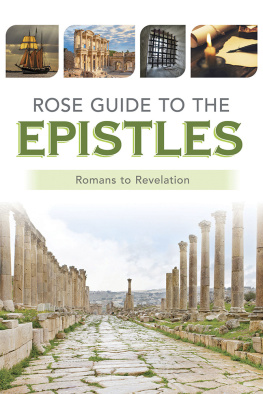



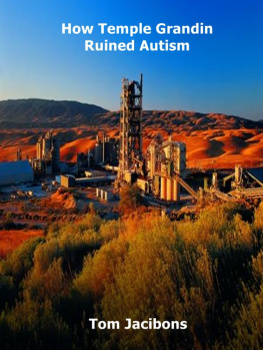
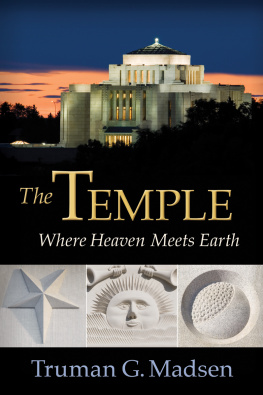
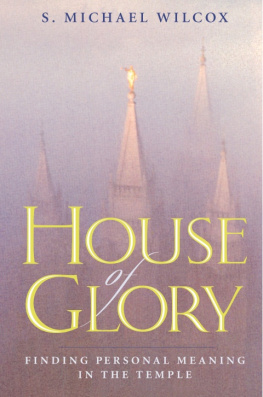
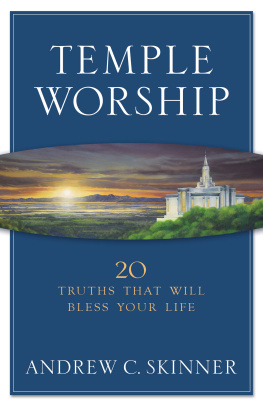
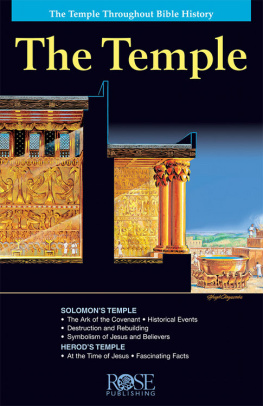
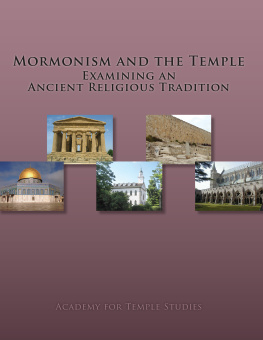

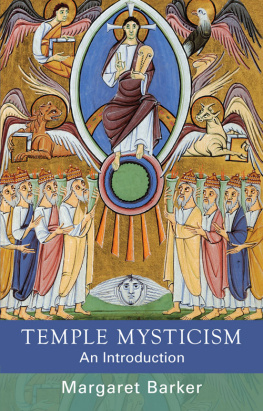


 SECTION 1
SECTION 1 

